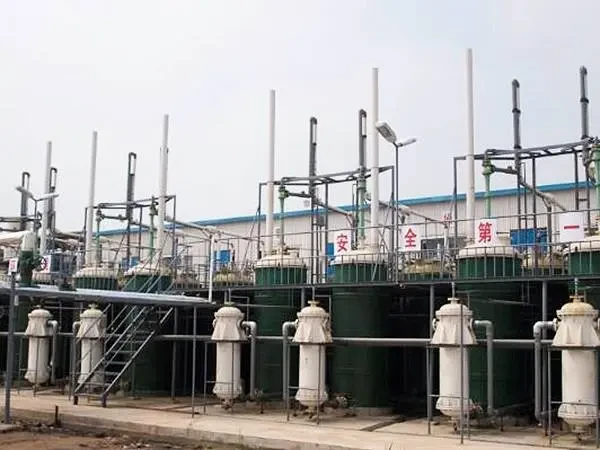



sodium chlorate formula
The Chemical Wonders of Sodium Chlorate A Comprehensive Overview
Sodium chlorate is a fascinating compound with the chemical formula NaClO₃. It belongs to a class of chemicals known as chlorates, which are salts containing the chlorate ion (ClO₃⁻). This compound is not only significant in chemical synthesis but also plays a crucial role in various industrial applications. By exploring its properties, uses, and safety considerations, we can gain a better understanding of this important chemical.
Structure and Properties
Sodium chlorate exists as a white, crystalline solid at room temperature. Its molecular weight is 106.44 g/mol, and it is highly soluble in water, making it easy to handle in aqueous solutions. The compound is relatively stable under normal conditions but can decompose if heated or if it comes into contact with reducing agents. The chlorate ion, ClO₃⁻, has a pyramidal shape with three oxygen atoms covalently bonded to a central chlorine atom. This unique structure contributes to its reactivity and makes it a valuable compound in various applications.
Production
Sodium chlorate is typically produced through the electrolysis of sodium chloride (common salt) in a sodium hydroxide solution. During this process, chlorine gas is generated at the anode, which then reacts with hydroxide ions to form hypochlorite ions. These hypochlorite ions can further oxidize to form chlorate ions. The overall reaction can be summarized as follows
\[ 3 \text{NaOH} + \text{Cl}_2 \rightarrow \text{NaClO}_3 + \text{NaCl} + \text{H}_2O \]
This method not only produces sodium chlorate efficiently but also leads to the generation of by-products that can be reused or processed further.
Industrial Applications
sodium chlorate formula

Sodium chlorate is widely used in several industrial processes. One of its most prominent applications is in the production of chlorine dioxide (ClO₂), a powerful bleaching agent. This compound is commonly used in the pulp and paper industry for wood pulp bleaching, where it replaces more harmful chemicals like elemental chlorine, reducing the environmental impact of the bleaching process.
In addition to its role as a bleaching agent, sodium chlorate is employed in herbicides for agricultural purposes. Its ability to kill unwanted vegetation makes it an effective tool for managing crops and maintaining agricultural land. However, due to its toxicity at higher concentrations, it must be used with care to avoid damaging desirable plants.
Moreover, sodium chlorate finds application in explosives and pyrotechnics. Its strong oxidizing properties make it suitable for use in formulations requiring an oxidizer, such as in fireworks or certain types of explosives. The careful handling of sodium chlorate in these contexts is essential, as improper mixing with reducing agents can lead to hazardous situations.
Safety and Environmental Considerations
While sodium chlorate is useful in various applications, it is important to consider its safety and environmental implications. The compound is classified as a moderately toxic substance. Ingesting or inhaling sodium chlorate can have serious health effects, including respiratory irritation, gastrointestinal distress, and even hemolysis (destruction of red blood cells). Therefore, strict safety measures should be implemented during its production and use, including Personal Protective Equipment (PPE) and proper ventilation in work areas.
From an environmental perspective, sodium chlorate can pose risks if released into water bodies. The compound can contribute to the formation of chlorinated organic compounds, which may be harmful to aquatic life. As a result, regulations governing its discharge and usage have been established in many regions to minimize its environmental impact.
Conclusion
Sodium chlorate is a versatile compound with significant industrial importance, thanks to its unique properties and reactivity. Its applications in bleaching, herbicides, and explosives highlight its utility across different sectors. However, the potential health and environmental risks associated with this chemical necessitate careful handling and adherence to safety regulations. As we continue to explore the boundaries of chemistry, sodium chlorate remains a noteworthy example of how chemical compounds can shape industries and innovations, while also reminding us of our responsibilities towards safety and environmental stewardship.
-
Why Sodium Persulfate Is Everywhere NowNewsJul.07,2025
-
Why Polyacrylamide Is in High DemandNewsJul.07,2025
-
Understanding Paint Chemicals and Their ApplicationsNewsJul.07,2025
-
Smart Use Of Mining ChemicalsNewsJul.07,2025
-
Practical Uses of Potassium MonopersulfateNewsJul.07,2025
-
Agrochemicals In Real FarmingNewsJul.07,2025
-
Sodium Chlorite Hot UsesNewsJul.01,2025










